Byobu Collection
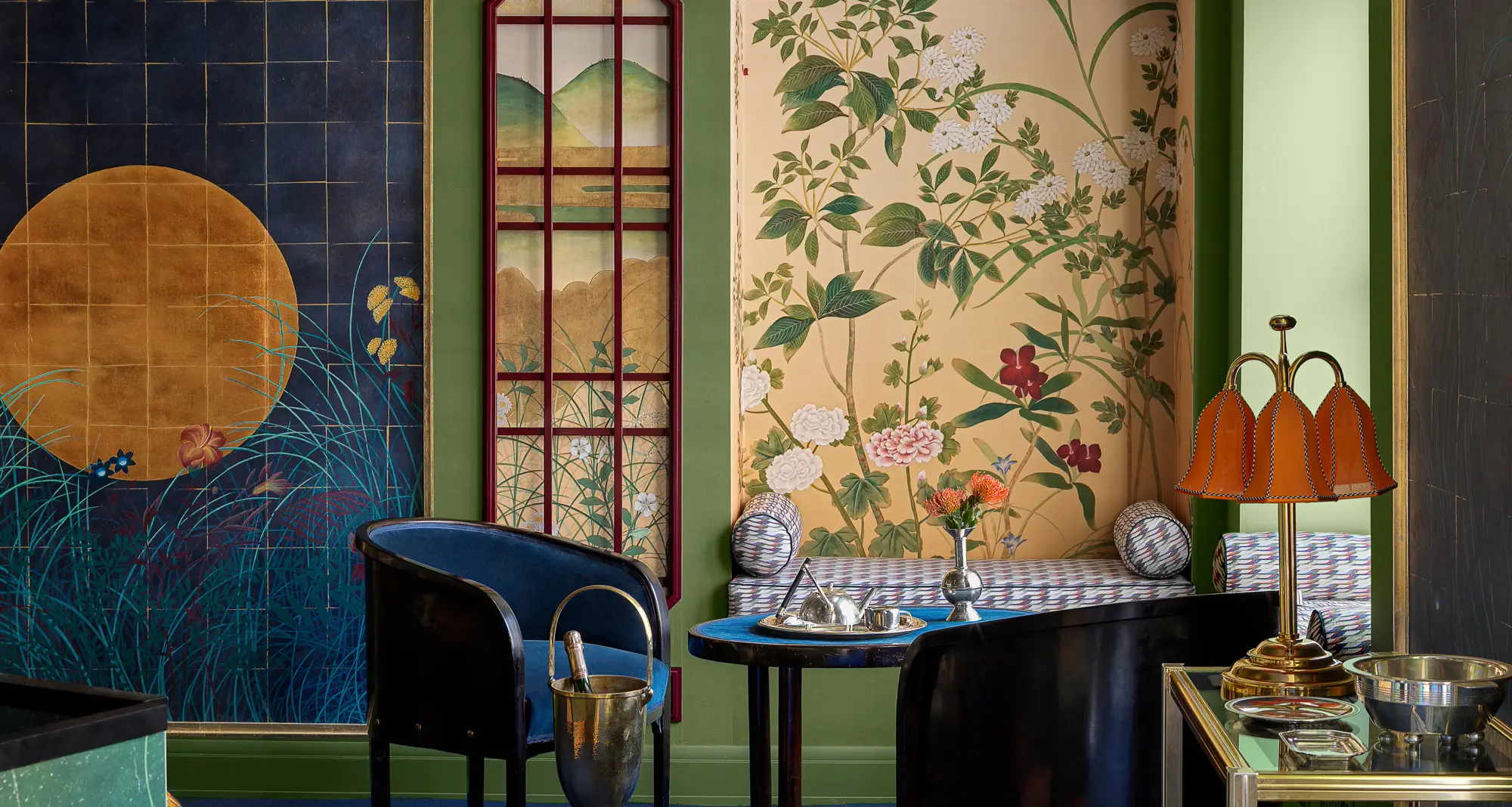


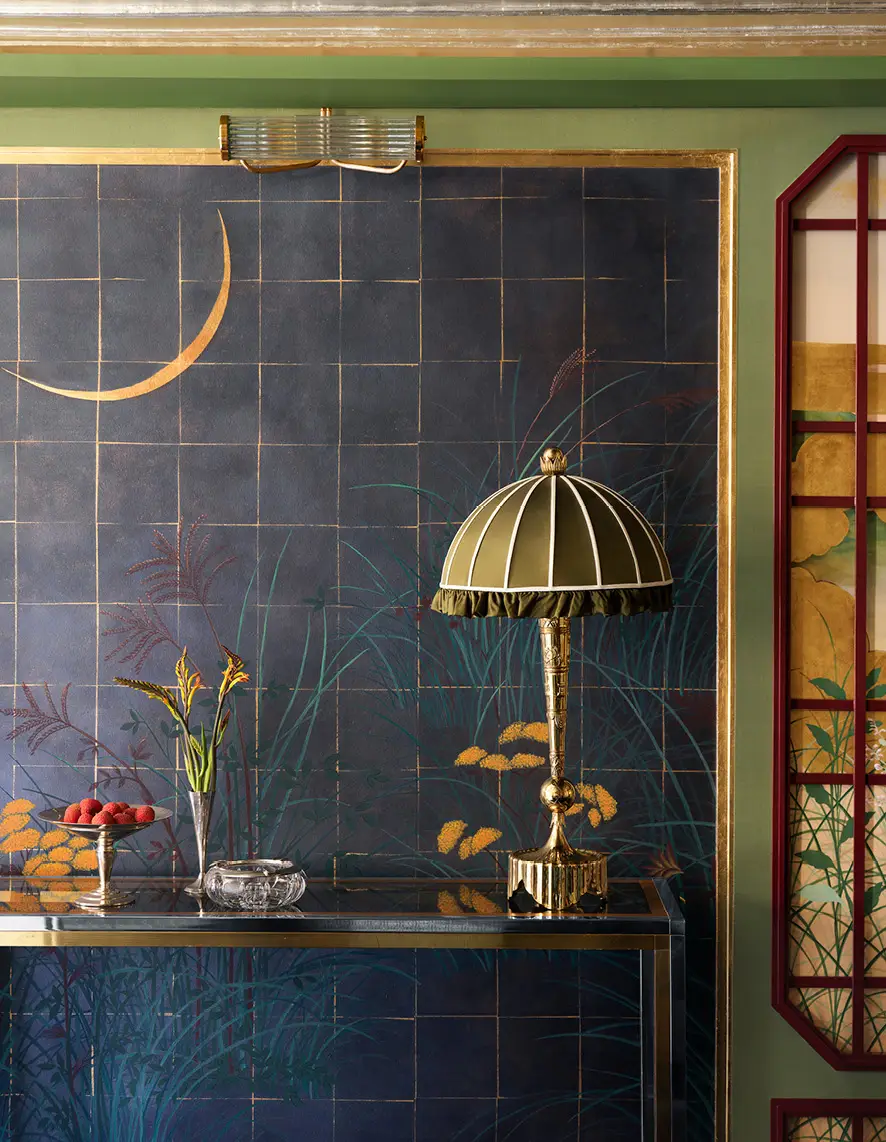
TSUKIMI
Japan’s traditional harvest moon festival, or tsukimi, lends its name to this hand-painted design that elegantly portrays the three stages of the rising moon against a radiant night sky. Illuminating a wild and riotous frieze of autumnal grasses and wildflowers with its shimmering glow, the brilliant crescent, half, and full moons are rendered in gold leaf on a contrasting textured silk ground. Gestural depictions of maiden flower, Chinese bellflower, peonies, and chrysanthemums come alive with painted pearlescent accents.
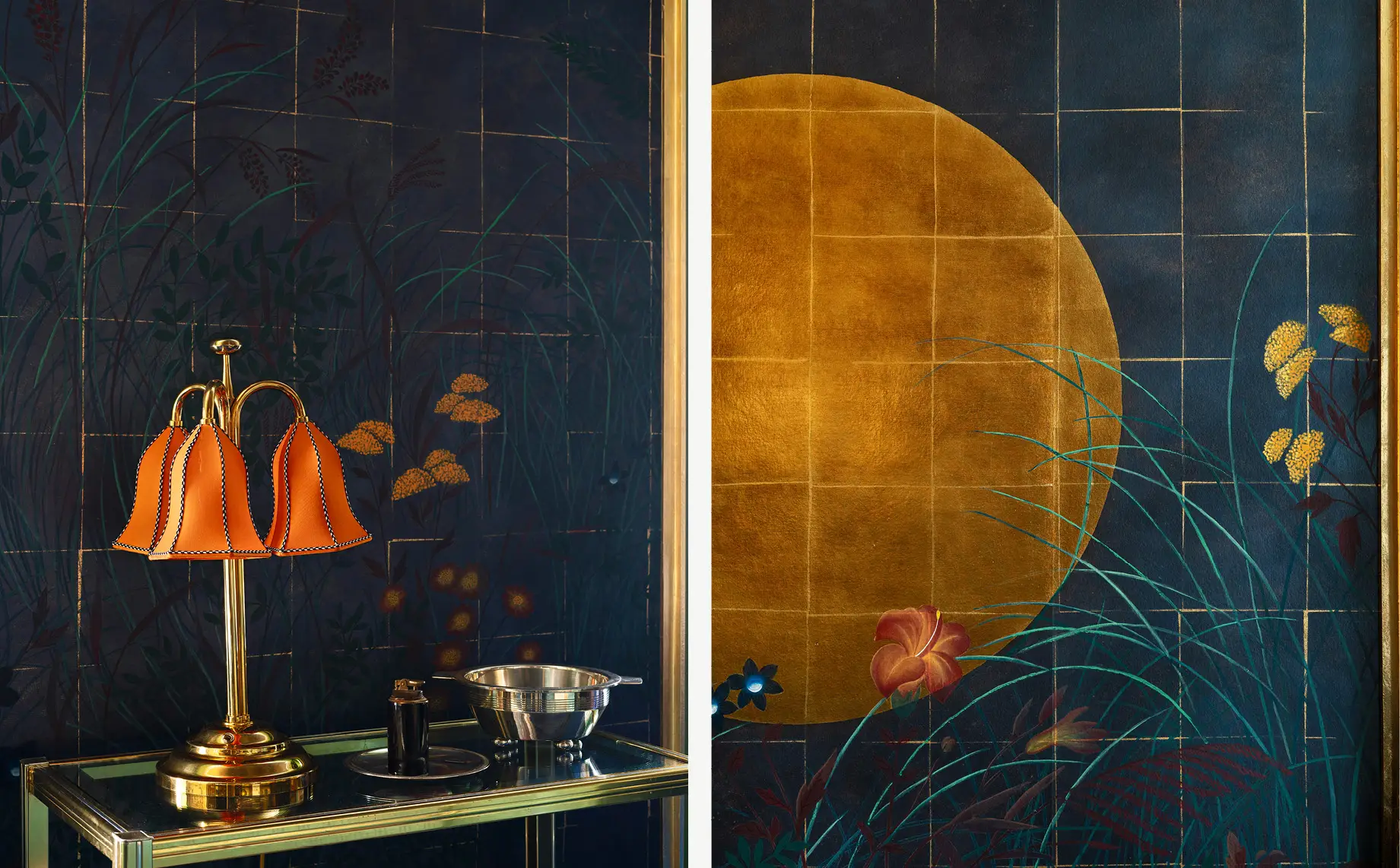
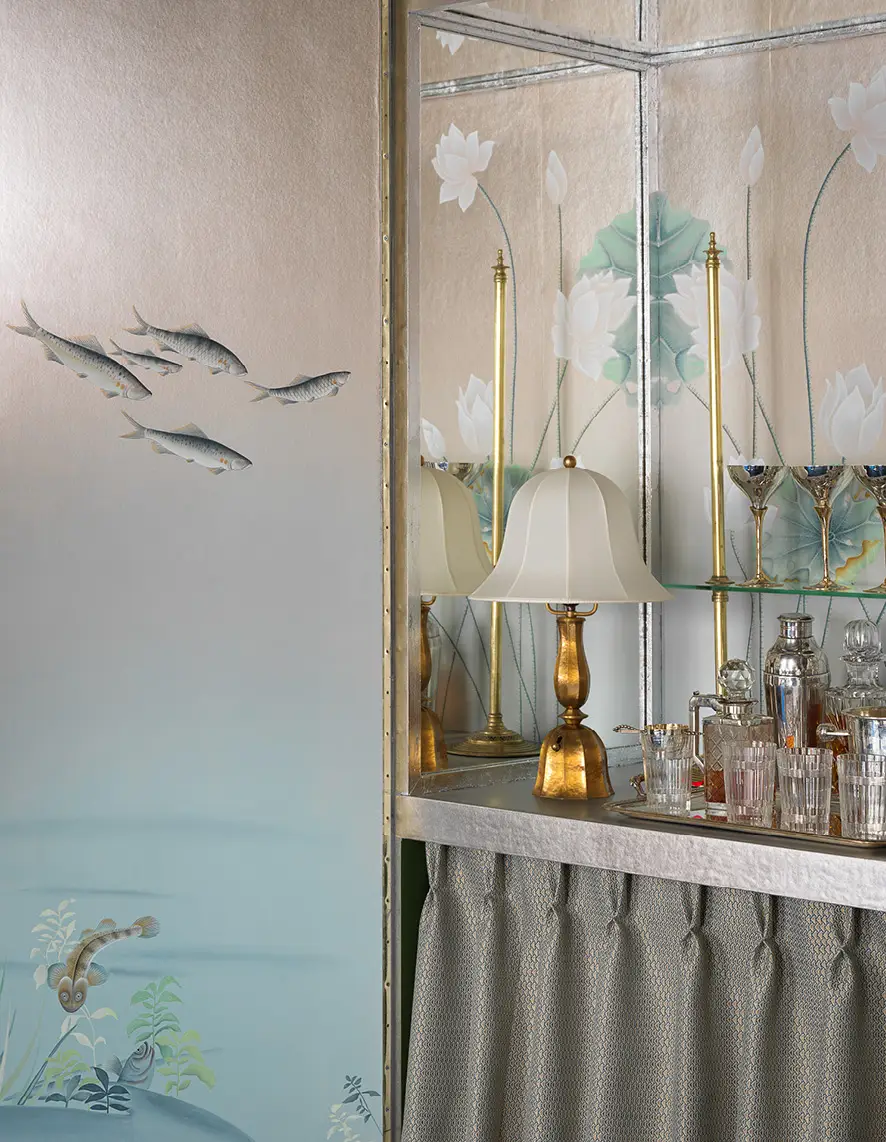
JAKUCHU
A lively underwater scene of towering lotus, shoals of fish, swimming frogs, and whimsical seaweed on an ombré gilded silver ground, ‘Jakuchu’ looks to the work of Ito Jakuchu, the mid-Edo period artist renowned for his realistic depictions of nature in the Ukiyo-e style.
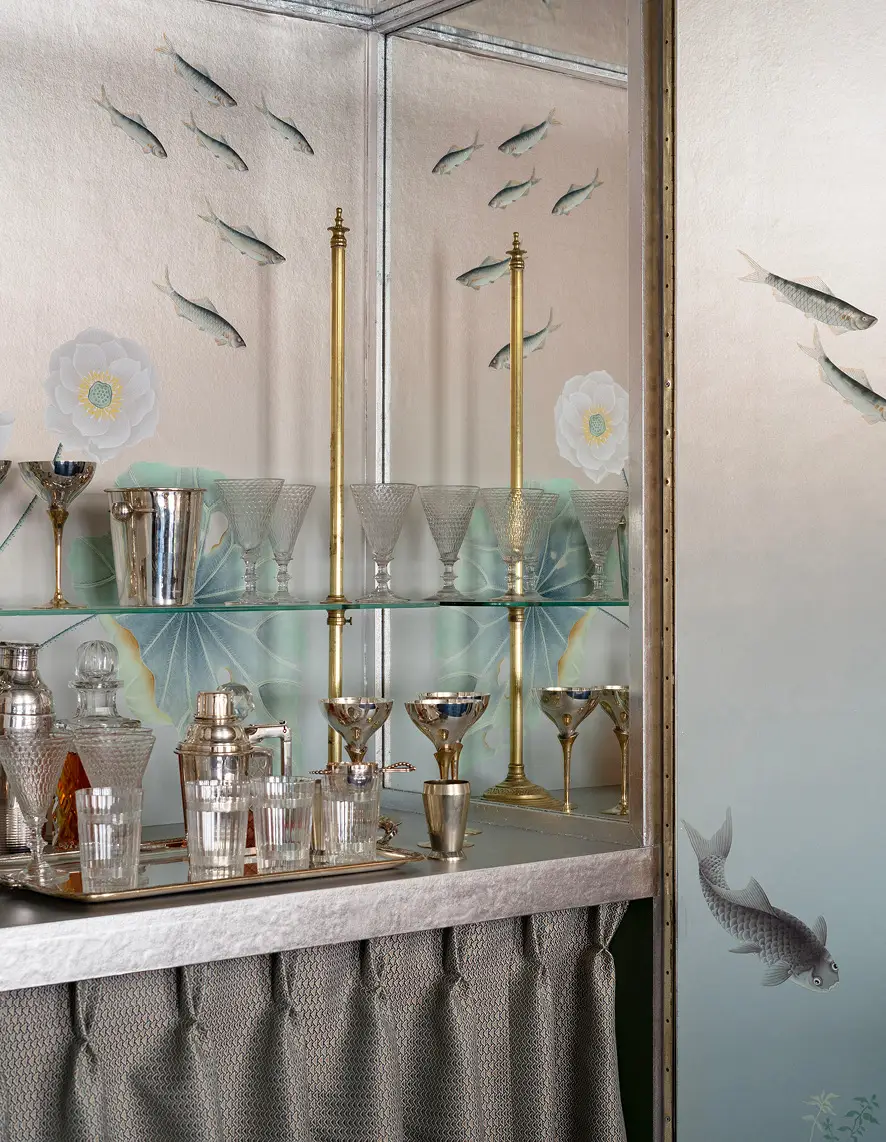
FOUR SEASONS
Since the 6th century, expressive paintings of the cycle of the four seasons, or shiki-e, flourished in Japan upon folding screens and hand scrolls, none more gracefully than the work of the late-16th century artist Kano Mitsunobu, whose work enhanced many Kyoto palaces and temples. In our striking, au courant interpretation of this common theme, a medley of flowers and plants - peonies, chrysanthemums, chestnut, and wild grasses hand-painted upon a pearlescent gold ombré Xuan paper - are depicted at exuberantly enlarged scales, fully immersing the viewer in the lyrical changing of seasons.
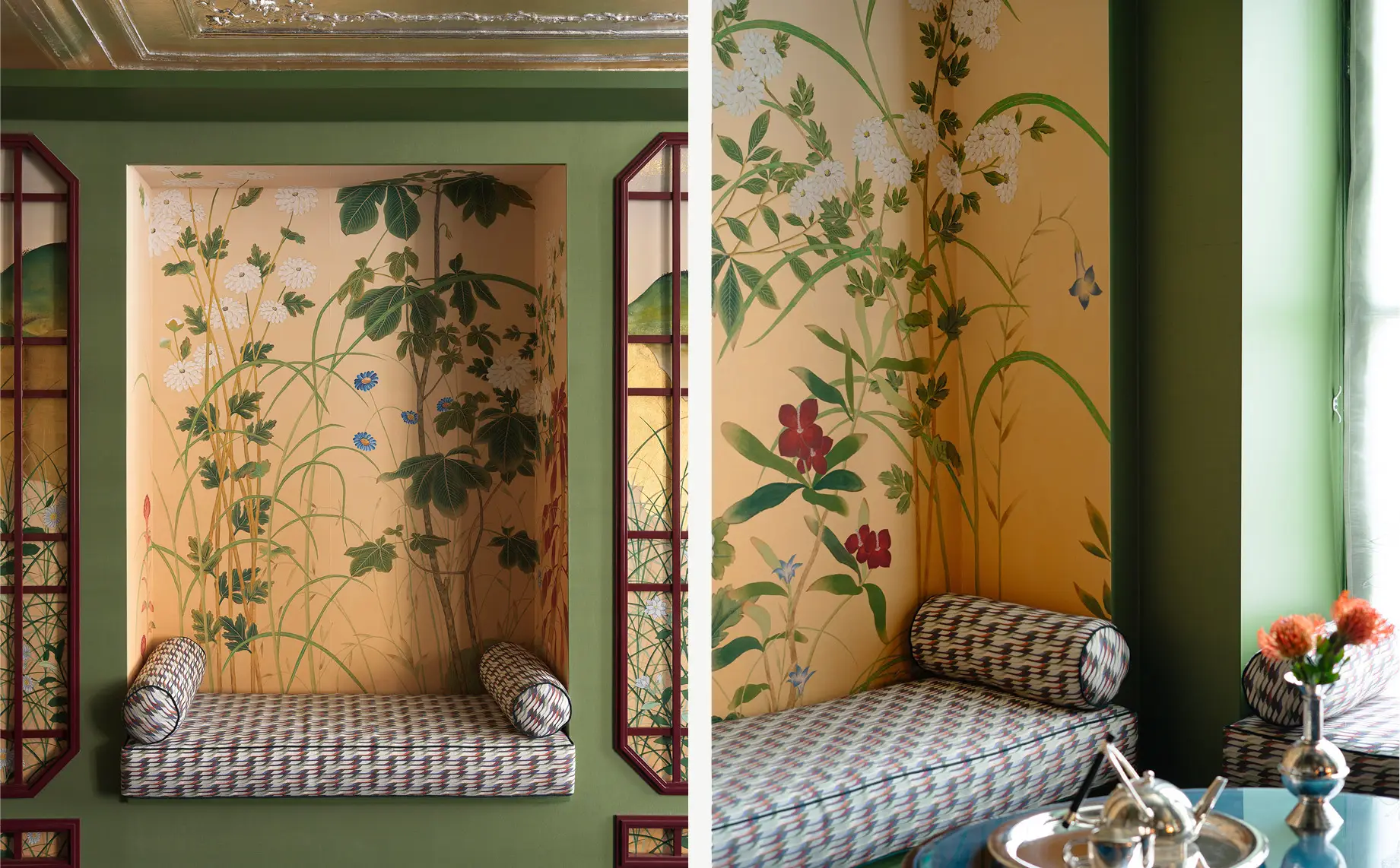
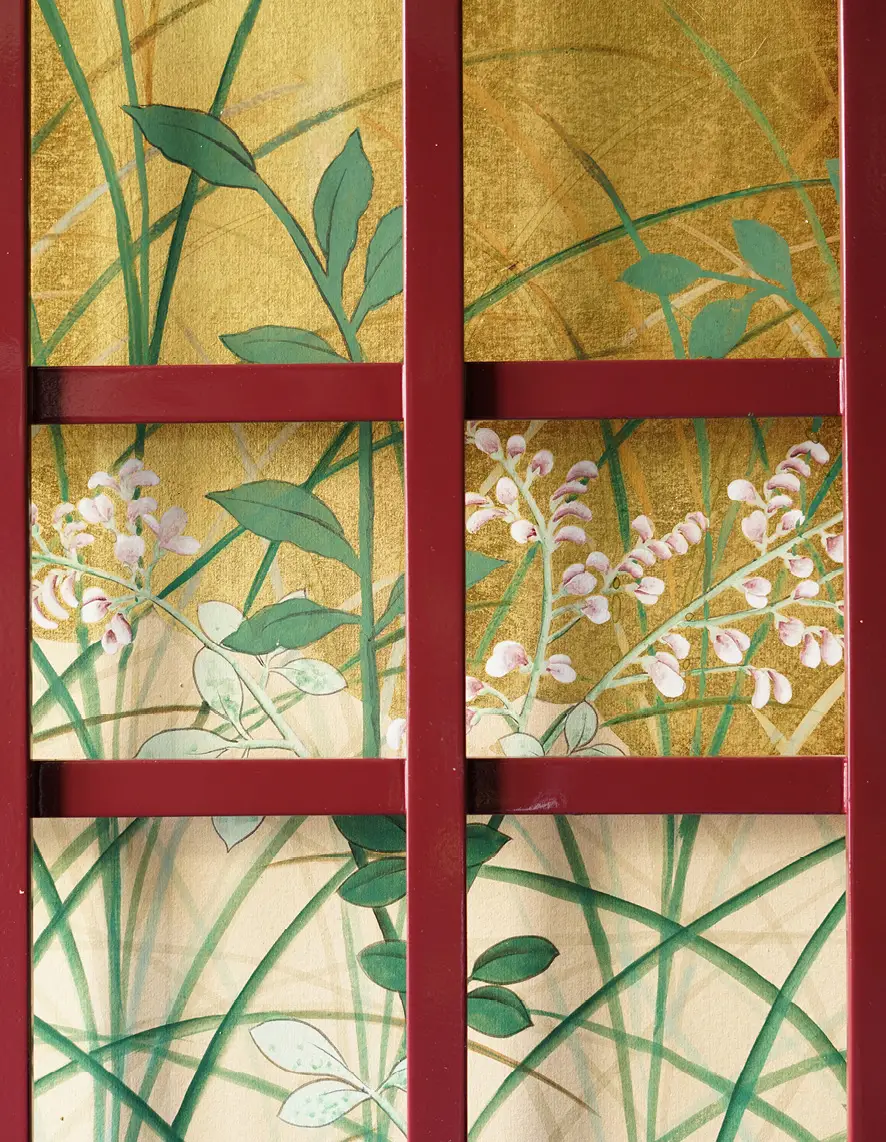
THE PLAIN OF MUSASHI
Across the once-wild plain of Musashi, a frequently depicted vista now in modern-day Tokyo that was historically known for its moon-viewing, a daytime version of a graphic landscape in autumn unfolds on an antiqued, white-painted Xuan paper ground. Set against a horizon of hand-gilded mist from which undulating mountains rise, a graceful field of Eulalia grasses and wildflowers stand upright in repeating patterns. Across the wide, open sky, flecks of gold leaf dusting the surface, made using the traditional sunago technique, lend a subtle luminescence.
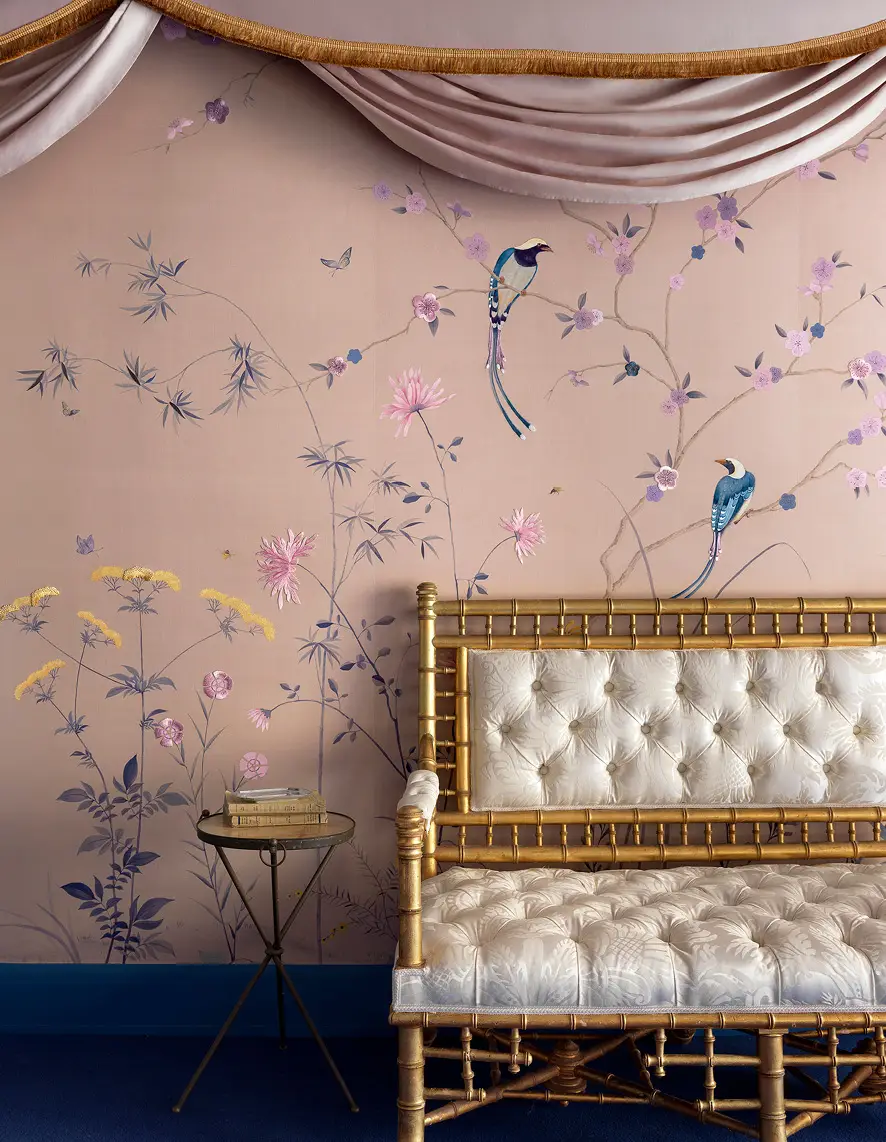
HANAMI
A Japanese-inspired take on traditional chinoiserie, ‘Hanami’ presents a melange of Japan’s native flora and fauna hand-painted with a contemporary elegance across a uniform plane. Poetic watercolour depictions of a spring garden - blossom trees, mimosa, peonies, chrysanthemums, kerria roses, and lantern flowers all in full bloom - intermingle with red-billed magpies, dragonflies, butterflies, and praying mantises. Upon delicate petals and bird feathers, exquisite embroidered silk details add further luminosity to the lustrous Almost Mauve slub silk ground.
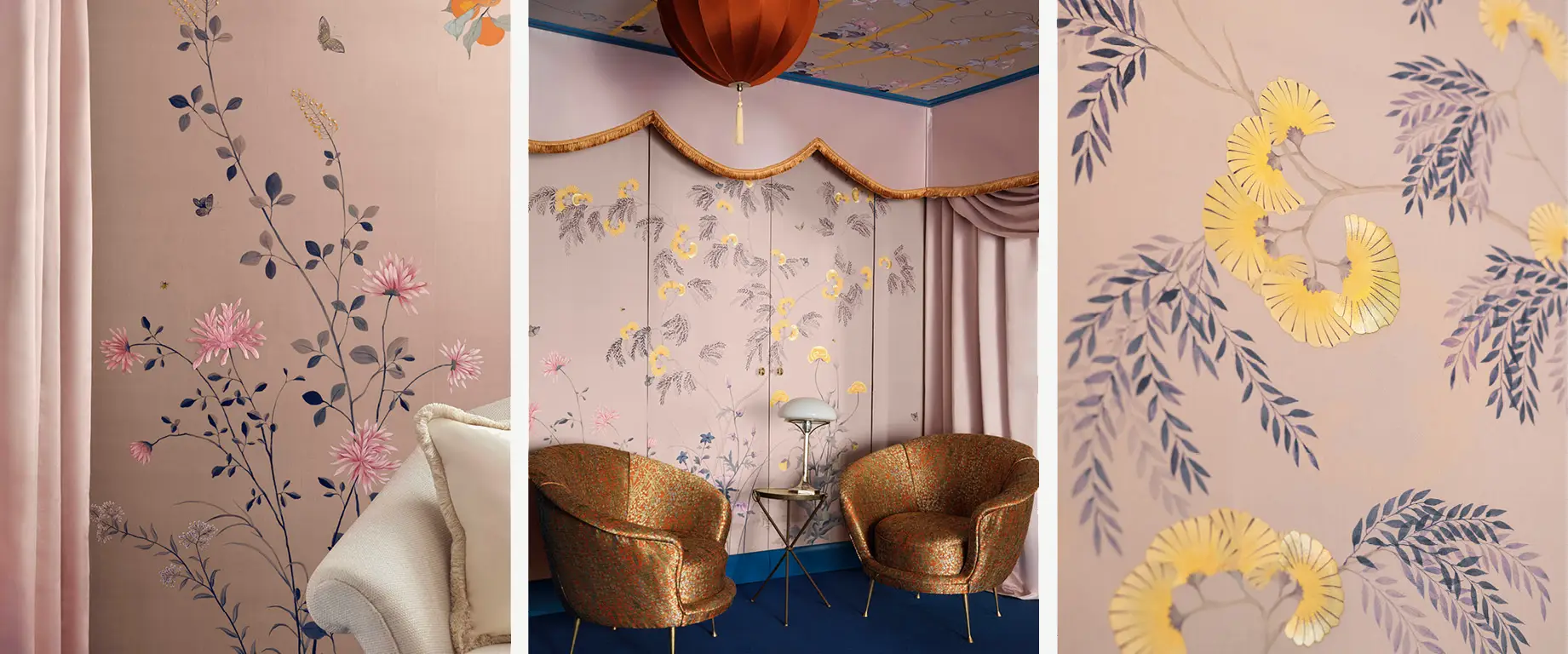
TSURO CRANES
As a symbol of happiness, good fortune, and longevity, the majestic crane, or tsuru, is frequently portrayed in Japanese art, literature, and mythology. This design is inspired by an early 19th-century Edo period screen with cranes both gracefully in flight and standing along a winding, pine tree-lined river. It is hand-painted using a combination of matte and glossy pigments in a bold and opaque style onto a gleaming silver gilded paper.
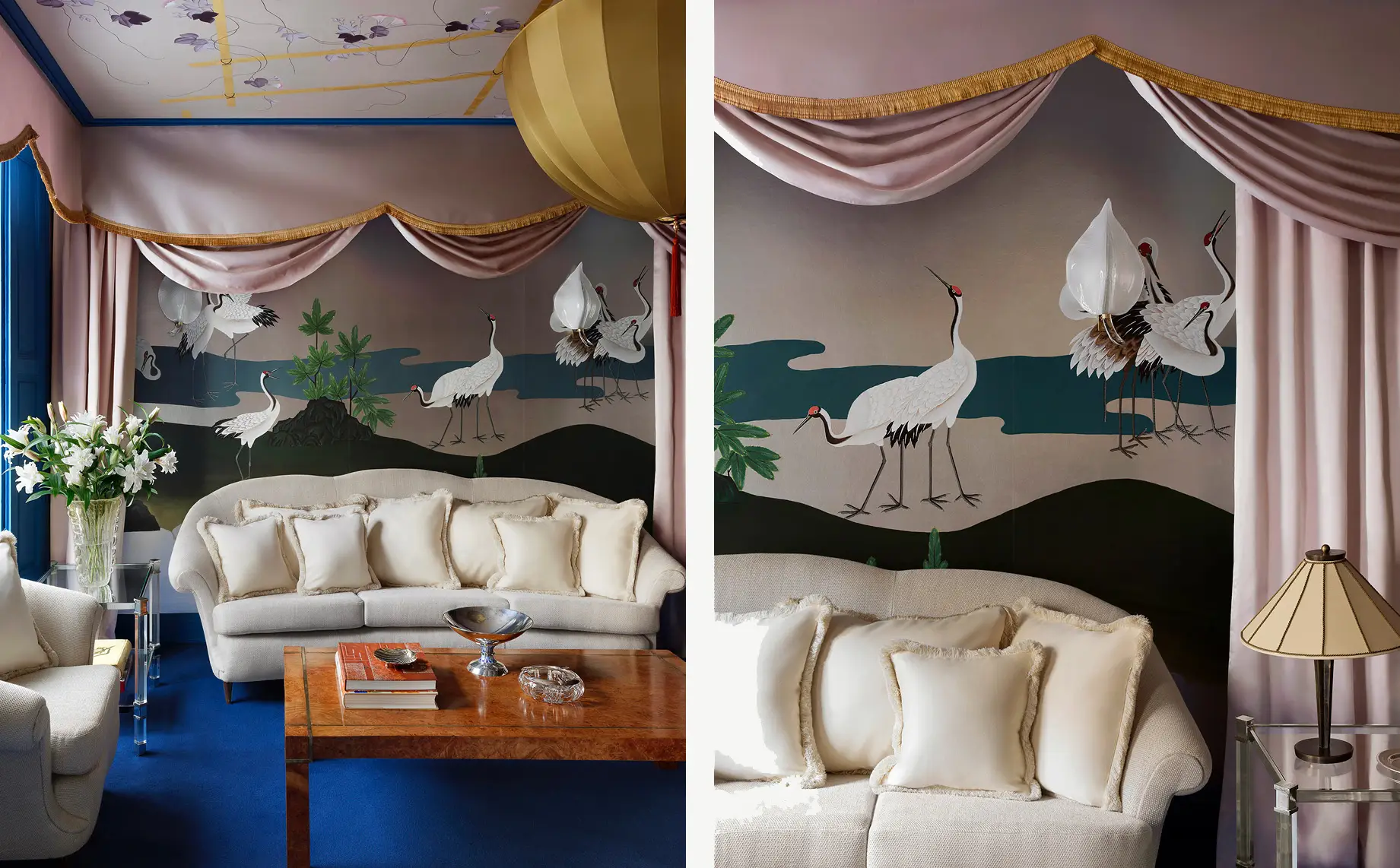
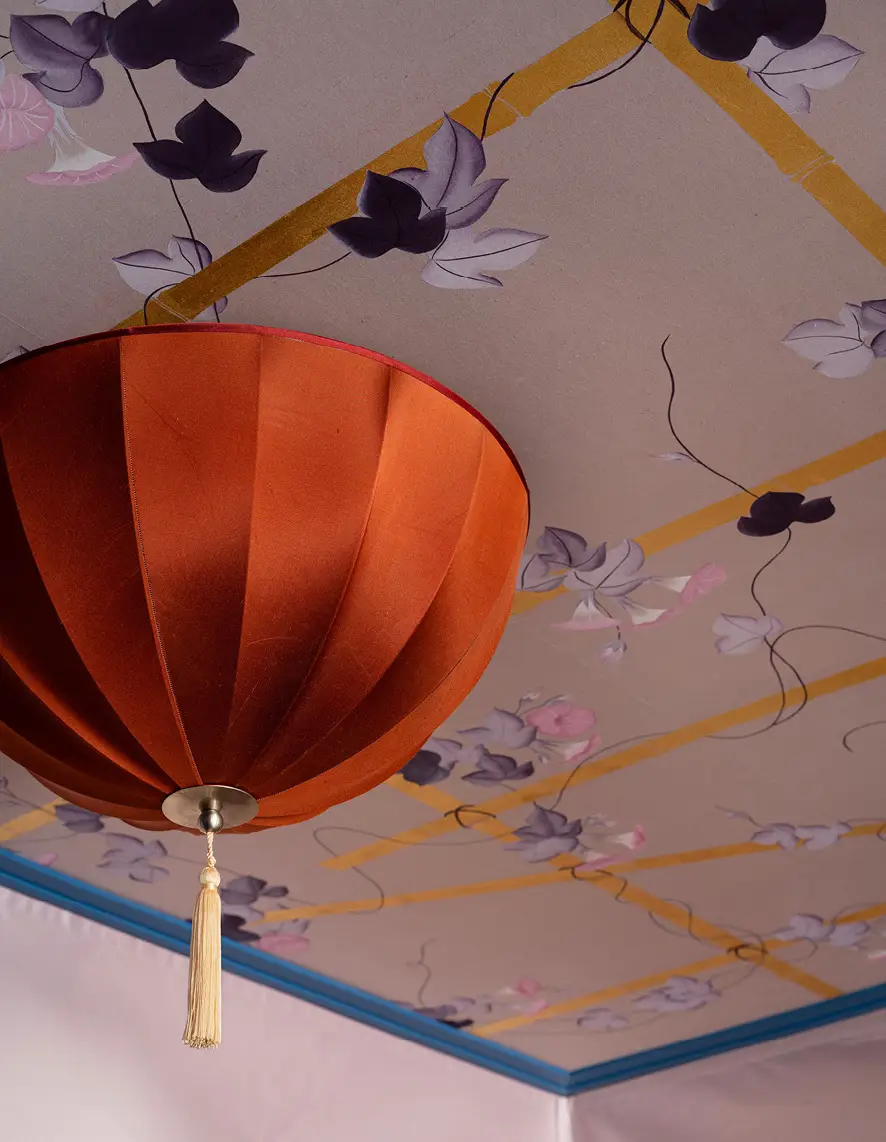
MORNING GLORY
Curling tendrils of morning glory unfurl around a glimmering bamboo arbour of hand-gilded 22-carat gold stretching across the scene as an abstract structure. Long symbolic of summertime in Japan, the trailing blooms reference early 17th-century depictions of the flower in Japanese art and, in our rendition, are hand-painted using opaque watercolour pigments that have been thickly applied to bestow a vivid, graphic appearance.

